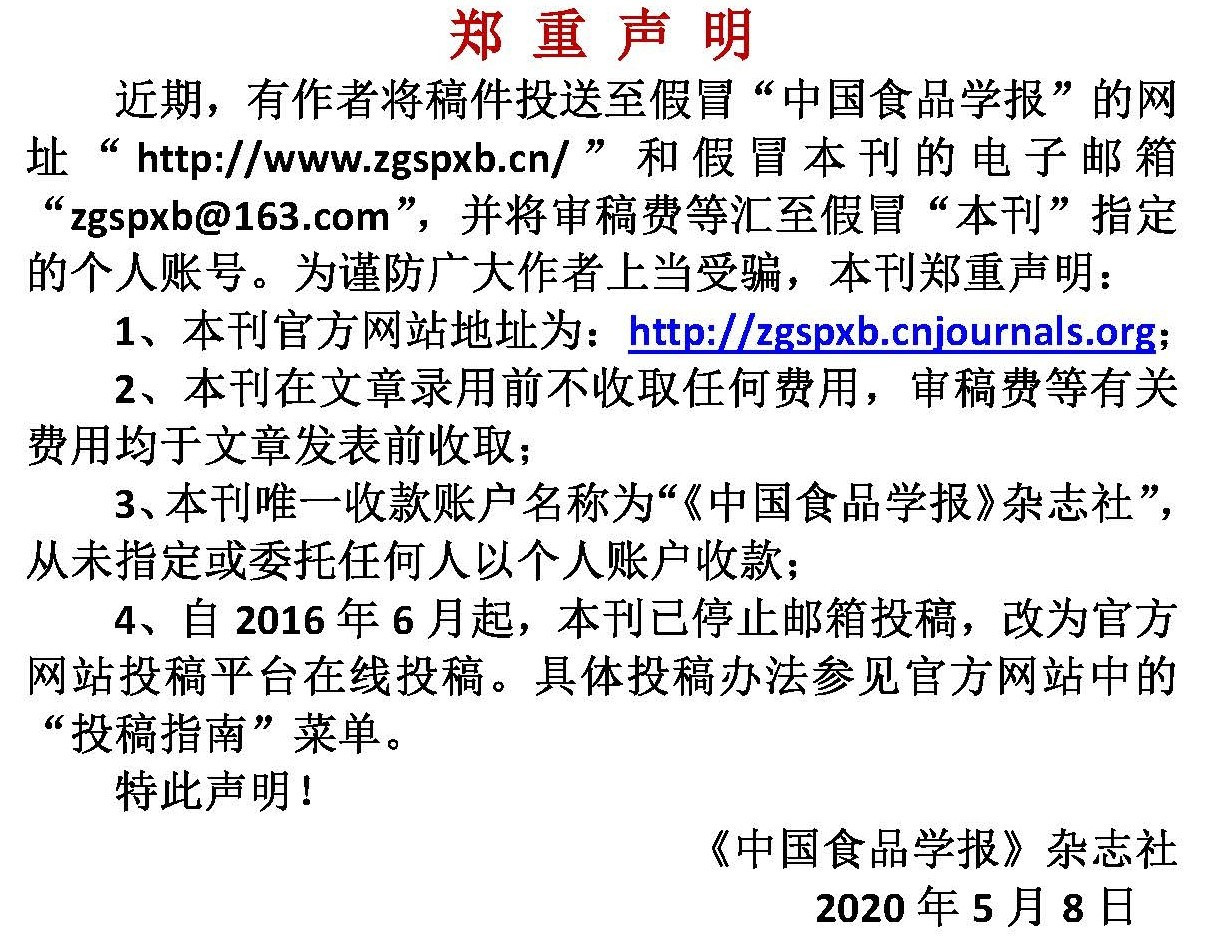盐度对紫甘蓝酸菜发酵过程中挥发性风味物质及理化指标的影响
作者:
作者单位:
(东北农业大学食品学院 哈尔滨 150030)
作者简介:
通讯作者:
中图分类号:
基金项目:
Effect of Salinity on Volatile Flavor Compounds and Physicochemical Properties in Red Cabbage Sauerkraut during Fermentation
Author:
Affiliation:
(College of Food Science, Northeast Agricultural University, Harbin 150030)
Fund Project:
引用本文
李智,解双瑜,孙波,柳凯,张宇.盐度对紫甘蓝酸菜发酵过程中挥发性风味物质及理化指标的影响[J].中国食品学报,2023,23(4):214-227
复制分享
文章指标
- 点击次数:
- 下载次数:
- HTML阅读次数:
历史
- 收稿日期:2022-04-12
- 最后修改日期:
- 录用日期:
- 在线发布日期: 2023-05-26
- 出版日期:
文章二维码

版权所有 :《中国食品学报》杂志社 京ICP备09084417号-4
地址 :北京市海淀区阜成路北三街8号9层 邮政编码 :100048
电话 :010-65223596 65265375 电子邮箱 :chinaspxb@vip.163.com
技术支持:北京勤云科技发展有限公司
地址 :北京市海淀区阜成路北三街8号9层 邮政编码 :100048
电话 :010-65223596 65265375 电子邮箱 :chinaspxb@vip.163.com
技术支持:北京勤云科技发展有限公司
